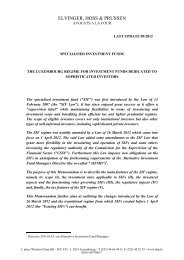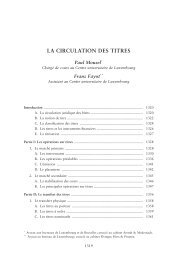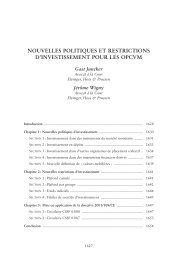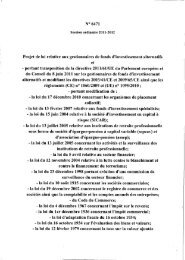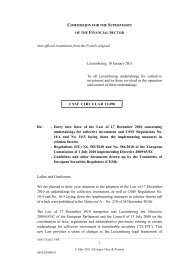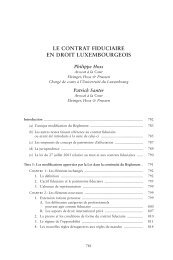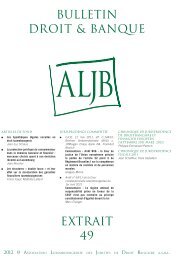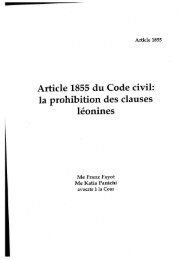1. Introduction - Elvinger, Hoss & Prussen
1. Introduction - Elvinger, Hoss & Prussen
1. Introduction - Elvinger, Hoss & Prussen
- No tags were found...
You also want an ePaper? Increase the reach of your titles
YUMPU automatically turns print PDFs into web optimized ePapers that Google loves.
LUXEMBOURGthe participation is held indirectly, the intermediary companies must also be fullytaxable resident or non-resident corporations. The participation may also be heldthrough a transparent entity referred to in paragraph 1 of article 175 LIR (seesection 2.2.1 above). Full tax consolidation is also available where the residentcompanies are directly or indirectly held by a Luxembourg PE of a non-residentcorporation which is fully subject to a tax corresponding to Luxembourg corporateincome tax.Where the 95 per cent threshold is not met the tax consolidation regime is alsoavailable subject to the consent of the Minister of Finance. In that case the holdingmust be of 75 per cent at least and minority shareholders representing at least75 per cent of the capital not held by the parent or resident PE must agree to thetax consolidation.In a tax consolidation, the taxable results of the members of the consolidatedgroup will be aggregated with those of the head company or Luxembourg PE.The profit or loss of the tax grouping will result from the addition of the individualtaxable results of the companies which are part of the group (and of the taxableresults of the Luxembourg PE if applicable) and any duplication of taxationor deduction will have to be neutralised.The option must be exercised for at least five subsequent fiscal years. Anycarry-forward losses resulting from fiscal years prior to the tax consolidation canbe used by the tax grouping but only to the extent where the company which hassuffered such losses realises a profit. (For a more detailed analysis, see the Luxembourgbranch report in volume 89b, Group Taxation, published on the occasionof the 2004 IFA Vienna Congress.)2.10. Post-acquisition integrationWithin the context of a domestic group of companies, an alternative to tax consolidationwould consist of the amalgamation of the buyer and the target, whichcan be structured so that it remains tax neutral (see 2.3.6).An amalgamation of a Luxembourg buyer with its purchased foreign targetwill take the form either of a cross-border merger or of a liquidation of the foreigntarget with in both cases transfer of the business of the foreign target to anexisting PE of the Luxembourg acquirer or to a PE created at that time.In the case of an international merger with the Luxembourg corporation beingthe surviving company, the Luxembourg corporation may value the transmittedassets either at the book value of the disappearing company or at a value comprisedbetween the book value of the disappearing company and the fair marketvalue of the assets (article 170ter LIR). The principle of this rule is identical tothe rule applying in case of contribution of assets against shares discussed in section2.3.4 above.The same rule applies if the foreign target is the subject of a division with anautonomous part of its business being contributed to the Luxembourg acquirer.If the Luxembourg corporation has held more than 25 per cent of the sharecapital of the disappearing company or meets the conditions of the dividend substantialparticipation exemption, any deemed tax gain realised on the value ofthat participation in the disappearing company is exempt from tax under article171(3) LIR.450



